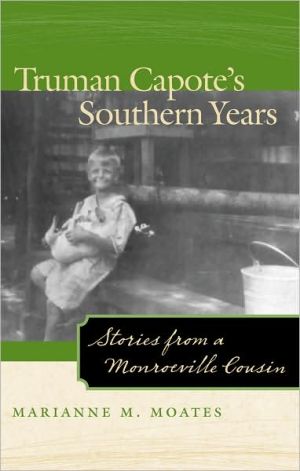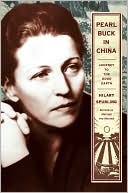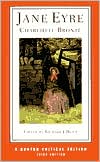Truman Capote's Southern Years: Stories from a Monroeville Cousin
Although much is known about the mature Truman Capote--his literary genius and flamboyant life-style--details of his childhood years spent in Monroeville, Alabama, have remained a mystery. Truman Capote's Southern Years explores Capote's formative years, the abandonment by his mother, and his early life in the care of elderly relatives. In Monroeville young Capote formed significant bonds and played childhood games with his cousin, Jennings Faulk Carter, and next door neighbor, Nelle Harper...
Search in google:
\ \ \ \ \ Chapter One\ \ \ Sook's Secret\ \ \ A woman with shorn white hair is standing at the kitchen window. She is wearing tennis shoes and a shapeless gray sweater over a summery calico dress. She is small and sprightly, like a bantam hen; but, due to a long youthful illness, her shoulders are pitifully hunched. Her face is remarkable—not unlike Lincoln's, craggy like that, and tinted by sun and wind; but it is delicate, too, finely boned, and her eyes are sherry-colored and timid....\ She is sixty-something. We are cousins, very distant ones, and we have lived together—well, as long as I can remember. Other people inhabit the house, relatives; and though they have power over us and frequently make us cry, we are not, on the whole, too much aware of them. We are each other's best friend.\ \ \ TRUMAN CAPOTE, "A Christmas Memory"\ \ \ When Truman Capote and I were children [recalls Jennings Faulk Carter], we always thought of Sook as our friend. Unlike the other adults who scolded, ruled, and otherwise tried to mold us into something they thought we should be, Sook was different. She let us be children, because in her own way she was as much a child as we were.\ Born Nanny Rumbley Faulk in 1871 she was, as Truman wrote, sixty-something when we were children spending time with her in the 1930s and 1940s. I spent almost as much time with Sook and Truman at Jenny's house as I did at my parents' farm about two miles down Drewry Road. Being with Sook meant fun and games, and I could hardly waitto get there.\ Sook was not only our friend but the nearest thing we had to a grandmother. She was kind, loving, and giving. Jenny and Callie liked telling Truman and me stories about Sook in her younger years when she'd hitch up old Sam, the horse, and go for buggy rides over dirt roads to visit her country friends. Even winter weather wouldn't stop her. She'd bundle up and wrap wool scarves around her hands to keep them warm.\ But by the time Truman and I were born in the mid-1920s, Sook had become a recluse. I never knew her to leave the yard even to go to church on Sunday. No, on Sunday she read her Bible, folded her hands for a prayer, and then looked up with a radiance that let us know she'd been somewhere special.\ She was content to stay at the house, which was practically walled in by this big limestone-rock fence. She picked peas and beans in the backyard garden or went to the wash house where the colored woman washed the clothes every week. One of Sook's daily chores was gathering eggs from the henhouse. Always at her side was her little pet terrier, Queenie. In spite of her sisters' disdain over the matter of chewing tobacco, Sook chewed discreetly, even carrying around a little handkerchief to wipe her mouth.\ A barber came over to the house once a month to cut Sook's sparse, white hair to below her ears. A high fever when she was a child had left her almost bald, with an enlarged heart and suffering from rheumatism. The fever may have accounted for her shy personality as well, for she had a shyness that was almost painful, except with children.\ Her sisters showed her little respect, treating her more like their servant than a sister. She did the ironing and cleaned the house, and if anyone in the family was sick, she nursed them back to health. I've seen her tear dirty sick linens off the bed and boil them with the sick clothes in a black washpot over an open fire in the backyard, then string them on the line to dry in the sun. When Callie and Jenny came in tired and irritable from working all day in their store, Sook was supposed to be pleasant to them and never argue back, even when they grumbled to her. Another of her duties was telling the cook what to do, as well as doing a lot of the baking. She made light, lemony, tea-cake cookies. Truman, Nelle, and I loved to sit in the kitchen with Sook after she made a fresh pot of coffee and a batch of cookies. She dipped the cookies in the hot coffee to soften them to make it easier for her to chew with her dentures. She did the same for us, feeding us one at a time.\ We'd laugh and talk about things that were important to us, like the way old Miz Katz fattened her Christmas goose by holding it down and stuffing corn in its mouth until its long neck couldn't hold another kernel.\ Sometimes Jenny would burst in on the scene and start yelling, "Don't give those children coffee! Don't you know it's bad for them? Silly old woman!" Then Sook's eyes would fill with tears, and she'd shrug her shoulders, purse her lips, and lead us quickly outside—anything to avoid a row with Jenny.\ Her only reward was being able to play with her young friends, Truman, Nelle, and me. Sometimes she called Truman Buddy; they called me Big Boy. Truman was Sook's dearest, and Nelle and I knew it, but that was all right because she had enough love to go around. We especially liked Sunday afternoons after the grown-ups had finished reading the newspaper, the Mobile Register. We'd take the comics and crawl up on Sook in her rocking chair on the back porch and read for hours. "Hambone" was one of our favorites. Helped along by Sook and Callie, Truman could read even before he started to school. He'd read "Hambone" in a deep voice, sounding for all the world like John White, the colored man who worked for Sook's brother, Bud, in the fields. Truman also had a high, squeaky voice, and when he mocked the characters we'd laugh until our sides ached. Then Sook would wrap her wiry arms around us and squeeze us with all her might, especially Truman.\ Truman needed extra love and affection in those days. After his mother, Lillie Mae, moved to New York and left Truman behind, she made no secret of her feelings. She wrote letters and cried over the telephone to Truman about how she had no money and no husband. Truman would cry to Sook, and then Sook would cry and say, "Oh, Buddy, I don't know what we can do to help our Lillie Mae get some money and be happy."\ Sook loved Lillie Mae, too, for she had helped raise Lillie Mae, my mother, Mary Ida, and their sister, Marie, when their parents died. Now she was raising Lillie Mae's little son. So to ease Truman's woes about his mother leaving him and then telling him how miserable she was, Sook dedicated herself to trying to make him happy. She was the center of his world. Mine, too, especially when we played pretend games. That's when Truman would sit on Sook's lap, and Nelle and I'd climb on each arm of the rocking chair. Sook would wrap her arms around us cocoonlike. We'd talk for hours, making up all kinds of stories. Truman could outdo Sook in the stories, even when he was six or seven years old. We'd lose ourselves in an adventure of killing a giant lizard, thus saving this beautiful, dark-haired young girl who, for some reason, always looked just like Lillie Mae. And we'd kill the lizard carefully, never cutting off his tail lest another one would grow in its place.\ Or maybe we just escaped some horrid Indian massacre like the one fought years ago at nearby Burnt Corn, Alabama, when Sook would suddenly shriek and say, "Oh! Oh! Callie and Jenny'll be here any minute. Dear Lord in heaven, is the commode flushed? The stove top clean? Dinner on the table?" She'd pop up and rush around tidying up before the stern-faced sisters arrived, or else face a tongue-lashing for sure.\ Each evening Jenny brought the money sack home from the store. She plopped the drawstring sack filled with loose change and bills on the desk in her room or hung it on the bedpost. When Jenny and Callie were in the living room listening to a radio program after supper, and Sook thought no eyes were watching, she would reach into the sack, slip out a handful of change, and drop it into her apron pocket. She never bothered the bills. Then when Truman, Nelle, and I were there playing games, she'd stick her hand down into her apron pocket, pull up three nickels, and say, "My, oh my. Look what I found here. Why Buddy, here's one for you. And one for Big Boy and Nelle, too."\ She always saved back enough change for her special treat, Brown Mule Chewing Tobacco. She'd get us to go to town and buy it for her. We loved doing this because we felt all grown up when we went shopping for Sook, handing the money to the clerk and saying, "One plug of Brown Mule, please." Then we'd take our nickels to the drugstore and splurge on candy or a soda. Sometimes we'd charge our sodas to Jenny's account; she never complained.\ Sook was never paid for any of her work around the house. Nor did she reap any monetary benefit from the land her father had left her. Her brother, Bud, took over her land and made it part of his cotton farm. Her clothes came from the racks in Jenny and Callie's store or secondhand from her sisters. She had no assets of her own. But she did have one thing that was hers and hers alone—a secret recipe for rheumatism medicine. Sook's mother, Samantha Rumbley, got the recipe from a band of Gypsies who came to town horse-trading before the Civil War. They camped out at the old horse-racing track near Monroeville. While they had their tent and wagon camping ground set up, they came down with a fever that nearly wiped them out. Although many of the people in Monroeville were reluctant to enter the camp for fear of the fever and fear of the Gypsies themselves, Samantha, who lived nearby, heard their moans and wails. She went into the camp and nursed the Gypsies. She helped them bury their dead in Emmons New Ground Cemetery.\ To show her appreciation, an old Gypsy woman gave the medicine recipe to Samantha. It was a concoction of natural ingredients, which supposedly eased the pain of rheumatism and gout. Samantha made the medicine by boiling the roots of the sourwood tree, mixing this with iron filings, and adding two secret ingredients. She strained the syrup through fine muslin, then bottled and aged it. There was a ritual for taking the medicine. Patients had to take a certain amount per day and had to adhere to a strict dietary regimen: no salt, fatty foods, or foods cooked in grease for as long as they took the medicine. Now all this was easier said than done, for most of the foods eaten by country folks back then were full of salt and fat. Meat, especially pork, was cured in salt as a preservative to make salt pork, a flavoring for turnips, collards, peas, and squash. And hog lard was the staple fat in everything else, from corn bread and biscuits to fried chicken.\ Before Samantha died she gave Sook, and only Sook, the secret recipe. I don't know why she told only Sook, or why it was such a secret. Perhaps she thought Sook needed something that was hers alone to bring her some income. After all, Callie and Jenny had the store, and Bud had the farm.\ Sook's fame spread as the one with a cure for rheumatism, and people came from all over Alabama to buy the dark, sticky liquid. Her business thrived so much that the doctors and druggists sicced the sheriff on her to shut down the operation. But nothing stopped Sook.\ As Sook got up in age, Jenny and Callie hired colored men to go into the woods to gather sourwood roots and bring in the iron filings. From there she could manage. She cooked her concoction in a large black pot in the backyard, stirring and sniffing all day. Then she'd strain it and pour it in medicine bottles obtained from the drugstore. Sook booked appointments for her patients with Jenny or Callie. Sook had a large clientele of coloreds, but not exclusively.\ When her patients arrived, they went to the back door because coloreds just didn't go to the front door in those days. They stood close to the back steps in the sunlight and called, "Miss Nanny, are you in there?" From the shadows at the center of the house, Sook answered, "I'm here," then proceeded to ask questions: "Where's the swelling? Do you have any sores? How long have you had them? Do they hurt?"\ The patients rolled up a pants leg and showed swollen joints, or pulled back a sweater to show a sore on an arm. Sook looked critically, rubbed her chin, thought about it, but never touched anyone. Once she was satisfied, she emerged from the shadows, handed over the medicine, and took the dollar. "Now swear you won't eat any salt or fatty food, and that you'll take the medicine every day," she said.\ "Yessum, Miss Nanny, jest like you say," was the reply.\ One day Sook, Truman, Nelle, and I were sitting on the back porch killing off giant lizards in a pretend game. Sook went inside to her bedroom to take a spoonful of rheumatism medicine and when she came back outside, her face was flushed with excitement. "Oh, Buddy! I have it! I know how Lillie Mae can get rich. Then she won't be so worried about finding a new husband. Come quick!" She grabbed Truman by the hand and told Nelle and me to wait there. Then the two hurried down the steps to the shade of the pecan tree. They put their heads together. Nelle and I strained our eyes and ears trying to see and hear what they were saying. But we couldn't make out a word. It sure looked serious, though. Sook took a stick in her hand and drew something in the dirt. She'd talk, then Truman would talk. Then she'd talk more, and Truman would answer. They seemed to stay out there forever. Finally, Sook, all smiles, kissed Truman's cheek and seemed to walk on air as she went around toward the front of the house out of our sight.\ Nelle and I descended on Truman, our bare feet hardly touching the smooth wooden steps. "Tell us what Sook said! Tell us the secret!" But for the first time in his life, Truman was reluctant to talk. He grinned sheepishly.\ There's no pretending that Nelle and I didn't feel hurt and left out, because we did. "Sook gave you the secret formula, didn't she? Didn't she?" we insisted.\ Truman looked at us as though he wanted to say something but was carefully choosing his words. His bright eyes darted first to me, then to Nelle, then to the room where he knew his beloved Sook was stretched out on her bed taking an afternoon nap. He dropped his head and thought a moment before he spoke. "Big Boy and Nelle, you know you're my best friends in all the world—next to Sook," he began. "Sook knew something that only she knew, and now I know it, too. But I can never, never tell."\ And I doubt he ever did.\ Soto Chronicles\ DE SOTO TO NORTH AMERICA IN 1539-1543\ \ \ Edited by LAWRENCE A. CLAYTON VERNON JAMES KNIGHT, JR. EDWARD C. MOORE\ \ The University of Alabama Press\ Copyright © 1993 The University of Alabama Press. All rights reserved.\
AcknowledgmentsPrologue1Introduction191Sook's Secret422Miss Jenny's Halloween Party513Orange Beach654Captain Wash and the Hen-And-Chickens Succulent735The Carnival836The Trimotor Ford987Popguns, Rubber Guns, and Jenny1078The Case of the Mysterious Lady1169Boss14210The White Elephant15011Arch16412The Cotton-Bale Caper17313Lil George18614Hatter's Mill19415Broadway20316Broadway, Act II214Epilogue224Index231
\ From the Publisher"The young Truman Capote who emerges from these amusing recollections is quick-witted, scheming, mercurial, and a born leader in mischievous escapades."\ —Publisher's Weekly\ \ \ \ \ \ BooknewsDetails configuration management (CM) for those in commercial and government environments, focusing on cost-effective implementations of the process and tailoring implementations to specific organizational needs. Coverage includes CM identification; configuration control of hardware and software; documentation; and audits. This second edition breaks down the configuration management process into separate steps, allowing individual procedures to be written to support each step, and offers expanded coverage of CAD/CAM, plus exercises. Annotation c. Book News, Inc., Portland, OR (booknews.com)\ \








